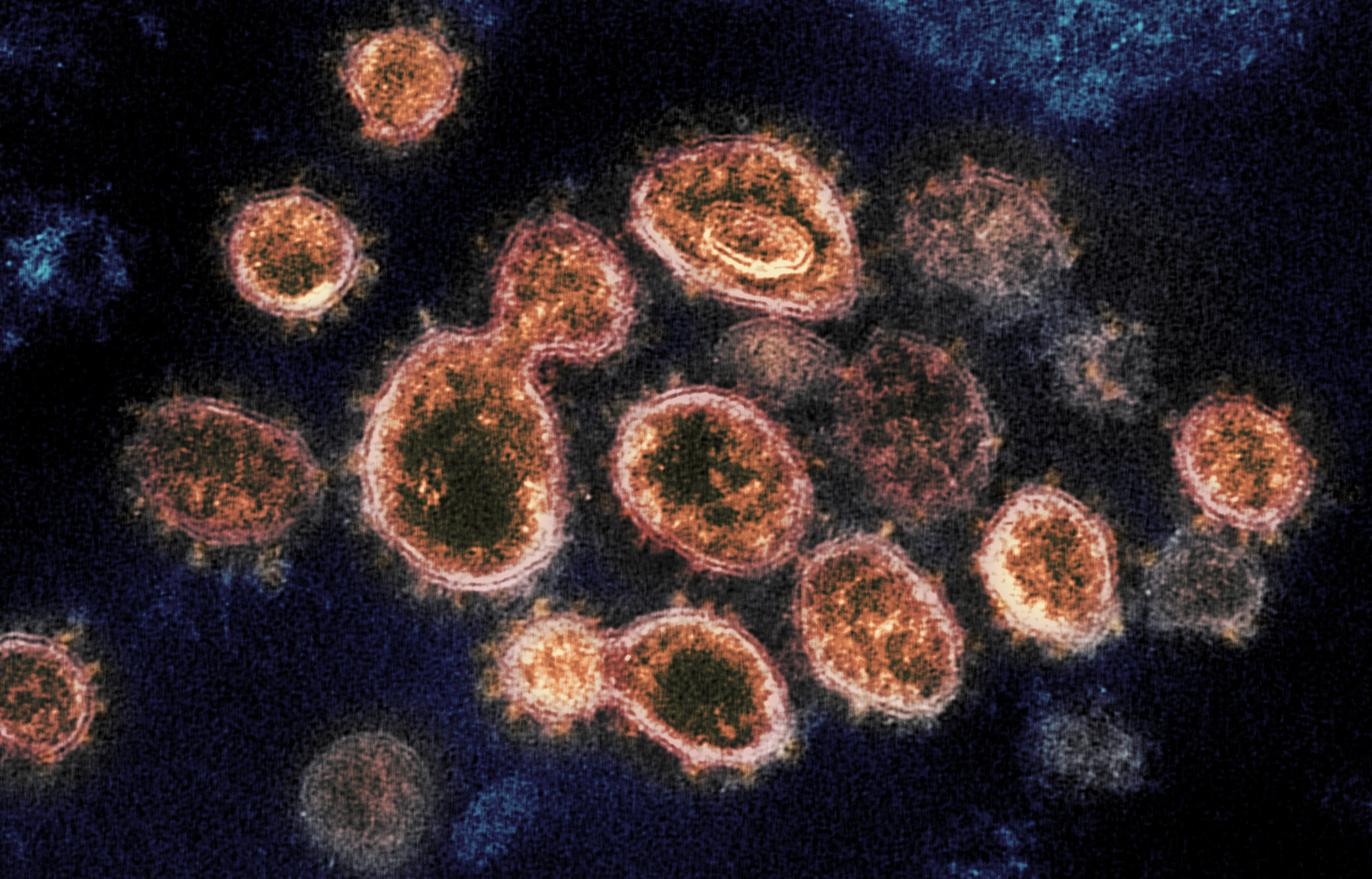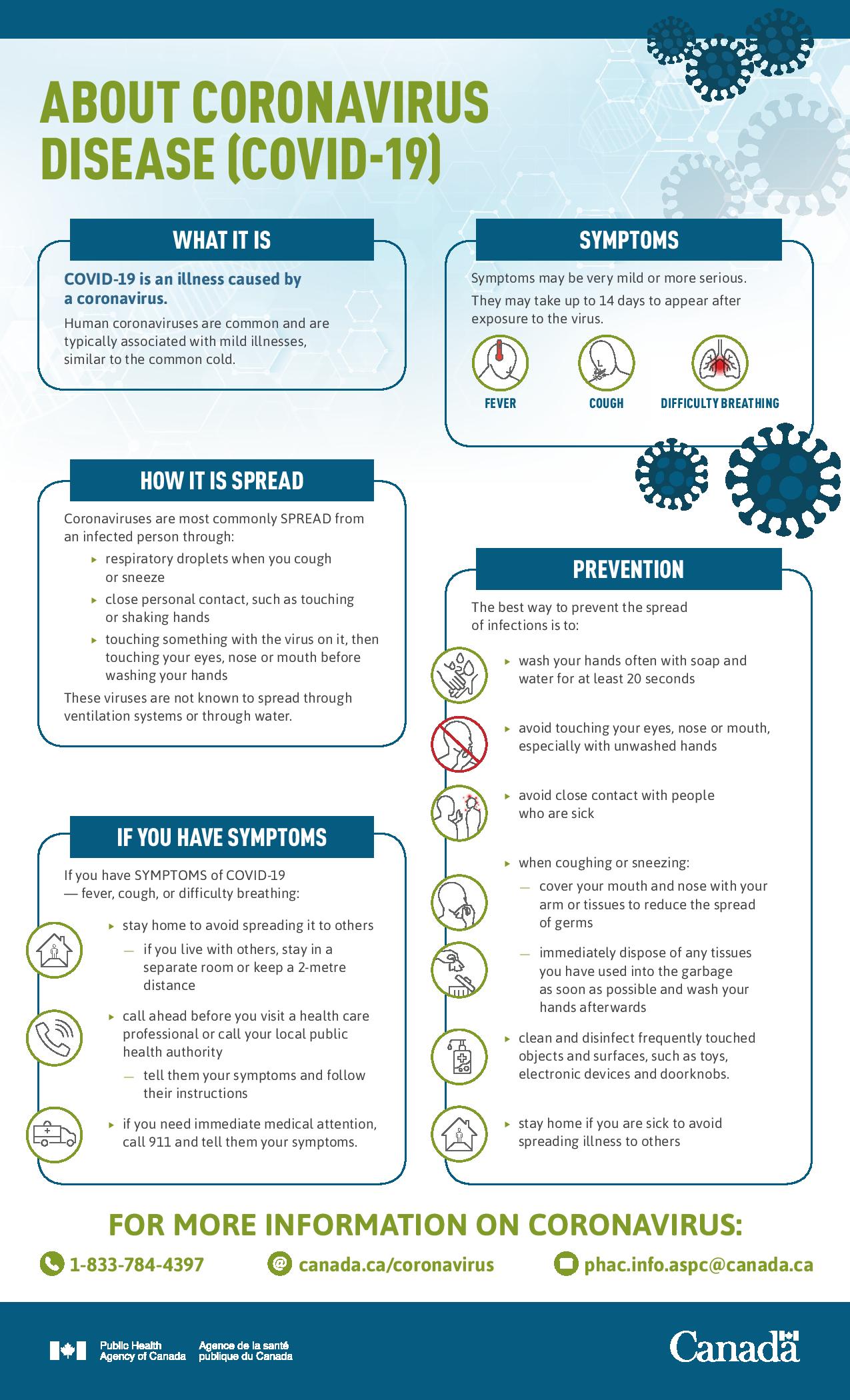
This transmission electron microscope image shows SARS-CoV-2, the virus that causes COVID-19, isolated from a patient in the U.S. Virus particles are shown emerging from the surface of cells cultured in the lab. The spikes on the outer edge of the virus particles give coronaviruses their name, crown-like. Credit: NIAID-RML Credit: National Institute of Allergy and Infectious Diseases-Rocky Mountain Laboratories, NIH
With the COVID-19 spreading to more than 100 countries of the world, the chances of Canadians getting infected due to their trips aboard are very high.
With WHO stating that the many of the “healthy” population having only mild cold-like symptoms, it is our responsibility to keep away from nursing homes, seniors’ residences, assisted living facilities, if we have travelled abroad. It is also prudent to monitor ourselves, should we develop a general feeling of “unwell” and keep away from public gatherings.
You may like:
DIY Hand Sanitiser – How to Make Hand Sanitiser Based on WHO Recommended Hand Rub Formula
COVID-19 symptoms like cold fever, cough, and difficulty breathing may take up to 14 days to appear.
In case you feel that these symptoms are due to coronavirus, call your local health authority or provincial health authorities. Do not visit a walk-in clinic or hospital emergency.
What Should You Do If You Think You Have Coronavirus
- If you need immediate medical attention, call 911 and tell them your symptoms.
- Take steps to protect others
- Do Self Assessment using online tools (links below) and if advised call Health Links
Steps to Take Protect Others
- Stay home if you are sick and self isolate. Wear a facemask, if you have to interact for any reason.
- Cover any coughs or sneezes into your arm or sleeve.
- Clean and disinfect objects you touch often, such as toys, doorknobs, your computer keyboard, and cellphone.
- Surface cleaning (except electronics): Clean using unexpired household bleach solution: To make a bleach solution, mix: 5 tablespoons (1/3rd cup) bleach per gallon (3.78 litres) of water or 4 teaspoons bleach per 4 cups of water. To clean electronics, Apple recommends cellphone cleaning with 70% isopropyl alcohol solution. “Using a 70 percent isopropyl alcohol wipe or Clorox Disinfecting Wipes, you may gently wipe the hard, nonporous surfaces of your Apple product, such as the display, keyboard, or other exterior surfaces. Don’t use bleach. Avoid getting moisture in any opening, and don’t submerge your Apple product in any cleaning agents. Don’t use on fabric or leather surfaces.”
- You can also use these products for various types of cleaning. Follow label instructs, wear gloves and make sure that the room is properly ventilated.
Self Assessment/Online Screening Tools
Online self-assessment tools will help determine whether you may need further assessment or testing for COVID-19. You can complete this assessment for yourself, or on behalf of someone else.
British Columbia
Phone: 811; Self Assessment
Alberta
Phone: 811; Self Assessment
Saskatchewan
Phone: 811; Self Assessment
Manitoba
Phone: 1-888-315-9257; Self Assessment
Ontario
Phone: 1-866-797-0000; Self Assessment
Quebec
Phone: 811; Self Assessment
New Brunswick
Phone: 811; Self Assessment
Nova Scotia
Phone: 811; Self Assessment
Prince Edward Island
Phone: 811; Self Assessment
Newfoundland and Labrador
Phone: 811 or 1-888-709-2929; Self Assessment
Nunavut
Phone: 867-975-5772; Self Assessment
Northwest Territories
Phone: 911; Self Assessment
Yukon
Phone: 811; Self Assessment
How To Self Isolate To Prevent COVID-19 Spread
If you have come into contact with someone infected with COVID-19 or are showing symptoms yourself, you may be asked to self-isolate. Don’t worry – it’s not as scary as it sounds!
Self-isolation is a cautious way to help to prevent the spread of infections during the incubation period – the time between exposure and when you start to feel sick. According to Alberta Health Services, this is usually 2-10 days for COVID-19, up to a maximum of 14 days. It is important to remember that not everyone who is exposed will get sick, but self-isolation ensures that those who do will not be in a public place when they do.
Alberta Health Services describes self-isolation as simply avoiding situations where you may infect others. Such situations include work, school, grocery stores, healthcare facilities, social gatherings, public transportation, etc. Avoid sharing household items, such as dishes, towels, or pillows, and regularly sanitize commonly handled items, such as doorknobs.
If needed, ask a friend or neighbour to run errands and drop off supplies or look into delivery services for meals and groceries.
